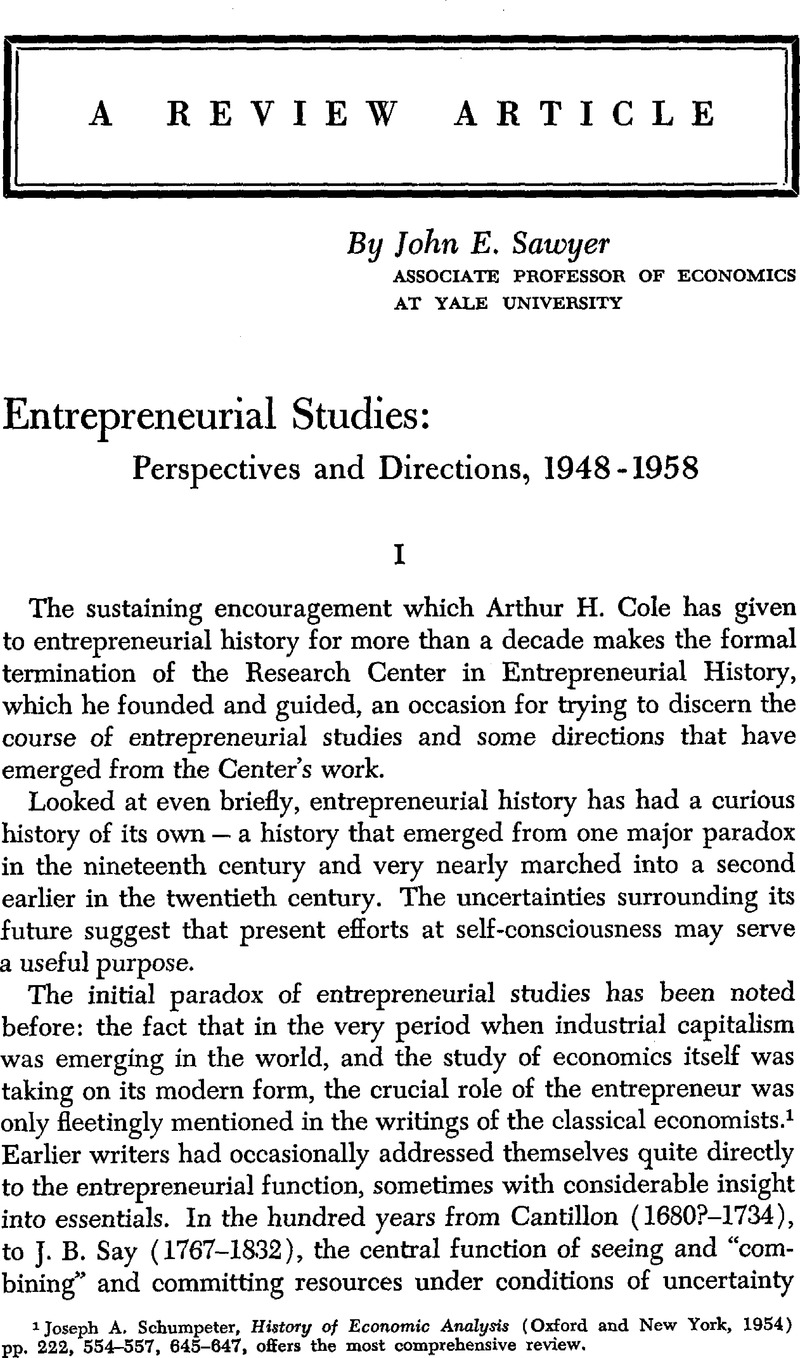Article contents
Entrepreneurial Studies: Perspectives and Directions, 1948–1958
Published online by Cambridge University Press: 24 July 2012
Abstract

- Type
- A Review Article
- Information
- Copyright
- Copyright © The President and Fellows of Harvard College 1958
References
1 Schumpeter, Joseph A., History of Economic Analysis (Oxford and New York, 1954) pp. 222Google Scholar, 554–557, 645–647, offers the most comprehensive review.
2 That Cantillon discussed it particularly in connection with the farmer suggested at an early stage something of the generality of the function to which we shall return later.
3 J. S. Mill's partial entry upon the subject need not upset the above. In a different idiom, of course, contemporary publicists and biographers such as Samuel Smiles did give extensive attention to the creative role of the entrepreneur; but their disposition toward the romantic and the heroic and the sheer crudity of much such writing, may have further removed their subject from the central concerns of economics. D. C. Coleman has suggested that the Smiles tradition may have left a negative legacy that still discourages pragmatic analysis of the realities involved.
4 The above phrase is quoted from his History of Economic Analysis, p. 555, but others like it run through his writings as they ran through his talk. The essential has been well caught in Arthur Smithies' appreciation and other of the articles of his life work that were gathered together in the memorial volume, Schumpeter: Social Scientist, ed. by Harris, Seymour (Cambridge, Mass., 1951).CrossRefGoogle Scholar
5 Compare for example the demise of the function as set forth in Part II of his Capitalism, Socialism and Democracy (New York, 2nd ed., 1947). Had Schumpeter lived another decade his realism would probably have brought some modification here; yet the force of his argument was not easily separated from his emphasis on uniqueness.
6 Be it clearly noted that nothing in the foregoing should be read to suggest that Schumpeter ever discouraged the divergent departures of others in the field. In his last years, for example, he readily gave his name and support to the then newly created Research Center in Entrepreneurial History and its wider explorations.
7 A bibliography of articles published in its journal, Explorations in Entrepreneurial History, and of books published under its auspices, shows a diversity of interests and approaches that ranges beyond any schematic review. Attention should also be called to the separate streams of production associated with such other centers as that of Hoselitz and Wohl at Chicago or Bendix at California, as well as parallel work abroad.
8 For a fresh re-casting of some old issues that surround these questions, see his recent paper, Thomas Easterbrook, W., “Comparative Economic History: Problems and Perspectives,” Journal of Economic History, Vol. XVII, No. 4 (Winter, 1957).Google Scholar
- 2
- Cited by




